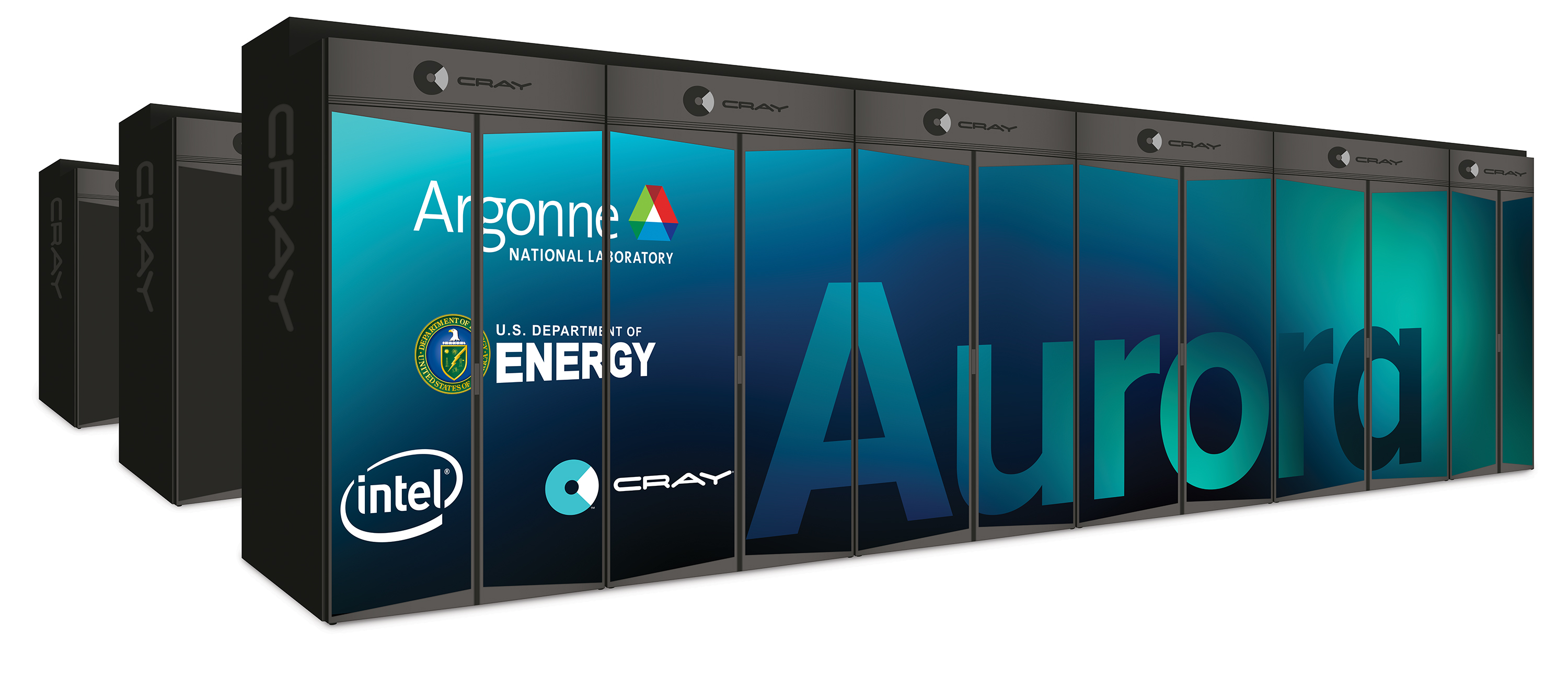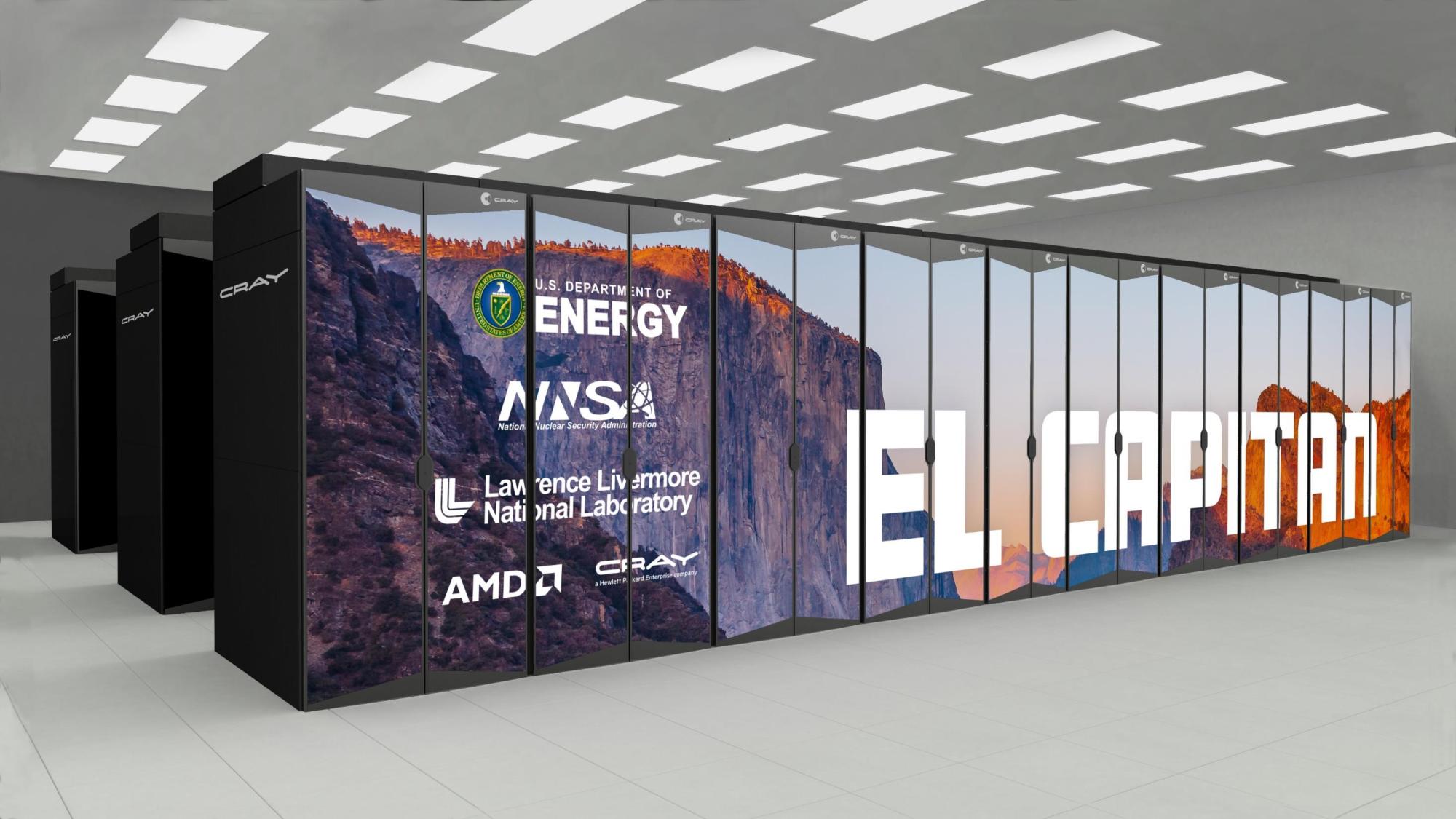AMD-Powered Frontier Remains Fastest Supercomputer in the World, Intel-Powered Aurora Takes Second With Half-Scale Result
Intel's oft-delayed Aurora remains a work in progress.

The Top500 organization released its semi-annual list of the fastest supercomputers in the world, with the AMD-powered Frontier supercomputer retaining its spot at the top of the list with 1.194 Exaflop/s (EFlop/s) of performance, fending off a half-scale 585.34 Petaflop/s (PFlop/s) submission from the Argonne National Laboratory's Intel-powered Aurora supercomputer.
Argonne's submission, which only employs half of the Aurora system, lands at the second spot on the Top500, unseating Japan's Fugaku as the second-fastest supercomputer in the world. Intel also made inroads with 20 new supercomputers based on its Sapphire Rapids CPUs entering the list, but AMD's EPYC continues to take over the Top500 as it now powers 140 systems on the list — a 39% year-over-year increase.
Intel and Argonne are currently still working to bring Arora fully online for users in 2024. As such, the Aurora submission represented 10,624 Intel CPUs and 31,874 Intel GPUs working in concert to deliver 585.34 PFlop/s at a total of 24.69 megawatts (MW) of energy. In contrast, AMD's Frontier holds the performance title at 1.194 EFlop/s, which is more than twice the performance of Aurora, while consuming a comparably miserly 22.70 MW of energy (yes, that's less power for the full Frontier supercomputer than half of the Aurora system). Aurora did not land on the Green500, a list of the most power-efficient supercomputers, with this submission, but Frontier continues to hold eighth place on that list.
However, Aurora is expected to eventually reach up to 2 EFlop/s of performance when it comes fully online. When complete, Auroroa will have 21,248 Xeon Max CPUs and 63,744 Max Series 'Ponte Vecchio' GPUs spread across 166 racks and 10,624 compute blades, making it the largest known single deployment of GPUs in the world. The system leverages HPE Cray EX – Intel Exascale Compute Blades and uses HPE's Slingshot-11 networking interconnect.

AMD is in the process of deploying El Capitan, which is projected to be faster than Aurora with 2 EFlop/s+ of performance, at the Lawrence Livermore National Laboratory. As such, Intel's incessantly delayed Aurora may never take the number one position on the Top500 list — the race is certainly on for the next round of Top500 submissions in June 2024.
The Aurora supercomputer was first announced in 2015, with a predicted finish date in 2018. Back then, the system was designed to use the Knights Hill processors that were later canceled. The system has seen numerous redesigns and reschedules in the years since, with the new Aurora being announced in 2019 with one exaflop of performance to be delivered in 2021. Yet another rescheduling in late 2021 claimed the system would deliver two exaflops upon completion, which is now slated for next year as Intel, Argonne, and HPE continue to work on system validation, verification, and scaling-up workloads across the new system. You can see Argonne's other Aurora benchmarks that it shared today here.
Meanwhile, Microsoft's new Eagle supercomputer, deployed in the Azure Cloud, has now taken the number three spot on the list, pushing Japan's Fugaku into fourth place on the leaderboard. Eagle is the first cloud system to break the top ten. The LUMI system in Kajaani, Finland, rounded out the top five with 379.70 PFlop/s of performance.
Get Tom's Hardware's best news and in-depth reviews, straight to your inbox.

Paul Alcorn is the Editor-in-Chief for Tom's Hardware US. He also writes news and reviews on CPUs, storage, and enterprise hardware.
-
bit_user ReplyHowever, Aurora is expected to eventually reach up to 2 EFlop/s of performance when it comes fully online. ... The system has seen numerous redesigns and reschedules in the years since, with the new Aurora being announced in 2019 with one exaflop of performance to be delivered in 2021. Yet another rescheduling in late 2021 claimed the system would deliver two exaflops upon completion, which is now slated for next year
Wow. Maybe there should be a Late500 list, for the latest deliveries of supercomputing installations that were still completed by the original vendor/integrator!
: D -
frogr "at a total of 24.69 megawatts (MW) of energy"Reply
MW is a measure of power not energy. Power is how fast energy is consumed.
E.g., The total power consumption of the ~10000 cpus and ~ 30000 gpus is 24.69 MW.
The total energy consumed for a 10 second calculation would be 246.9 MJ. For a 1 hour calculation it would be 24.69 MW h or (24.69 \00d7 3600) MJ -
Kamen Rider Blade I'm surprised they let Intel continue it's Aurora contract after how late it was.Reply
I wouldn't be surprised if future Super Computer contracts have a Opt-Out clause due to late-ness of vendor.
Especially given how bad Intel has been. -
thestryker Reply
This was never going to happen once Intel made cost guarantees. At the end of the day the cost of Aurora is still ~$200m (to the gov't) which is significantly cheaper than anything else in its class (El Capitan and Frontier are ~$600m).Kamen Rider Blade said:I'm surprised they let Intel continue it's Aurora contract after how late it was.
I wouldn't be surprised if future Super Computer contracts have a Opt-Out clause due to late-ness of vendor.
Especially given how bad Intel has been. -
Kamen Rider Blade Reply
But Frontier was proven to be (On-Time & Cheaper to Operate, energy wise).thestryker said:This was never going to happen once Intel made cost guarantees. At the end of the day the cost of Aurora is still ~$200m (to the gov't) which is significantly cheaper than anything else in its class (El Capitan and Frontier are ~$600m).
That's money well spent IMO, can't say the same for Intel's Aurora.
Late, More Power Hungry, still on-going build up. -
thestryker Reply
I'm not entirely sure what your point is here. Should the DOE have canceled Aurora? If so when should they have canceled it?Kamen Rider Blade said:But Frontier was proven to be (On-Time & Cheaper to Operate, energy wise).
That's money well spent IMO, can't say the same for Intel's Aurora.
Late, More Power Hungry, still on-going build up.
The power consumption is built into the contract and only becomes a problem if they fail to reach the performance target (they can't just increase power consumption). The time it's currently taking isn't a problem unless they miss their setup and acceptance timelines.
Has Aurora been a boondoggle? Absolutely, but everything was locked in when the dollar figures became guaranteed and hardware started arriving (I believe initial test hardware was late 2021). The real question is whether or not it delivers what was promised. Realistically speaking that is the only important part of systems like these. -
bit_user Reply
Other than cancelling it and letting someone else build a completely difference machine, what else were they going to do?Kamen Rider Blade said:I'm surprised they let Intel continue it's Aurora contract after how late it was.
Normally, I think you'd fire the integrator. However, if Intel was the primary party to the contract, then you have fewer and more drastic options.
They had a financial penalty, and it was big enough to warrant a mention in one of Intel's quarterly reports to its investors.Kamen Rider Blade said:I wouldn't be surprised if future Super Computer contracts have a Opt-Out clause due to late-ness of vendor. -
George³ Reply
How is so cheap?thestryker said:At the end of the day the cost of Aurora is still ~$200m -
thestryker Reply
The contracting so Intel had a $300m writeoff due to it.George³ said:How is so cheap? -
TerryLaze Reply
Aurora changed from wanting half an exaflop of xeon phis to wanting 2 exaflops, how does anybody expect this to happen without any delays?!Kamen Rider Blade said:I'm surprised they let Intel continue it's Aurora contract after how late it was.
I wouldn't be surprised if future Super Computer contracts have a Opt-Out clause due to late-ness of vendor.
Especially given how bad Intel has been.
Aurora realized that that would be completely impossible with xeon phi so they changed to a platform that wasn't even ready yet, the max series got delayed and that didn't help but it wasn't intel that just changed the parameters, aurora made changes that took a lot more time to be realised.
Only that they didn't mention anything like that and you are just projecting your feelings on irrelevant quotes...bit_user said:They had a financial penalty, and it was big enough to warrant a mention in one of Intel's quarterly reports to its investors.
You are talking about an ~ $300 million pay off or write off or whatever from intel to intel federal...so your argument is that intel gave intel money so that is a fine against intel... makes complete sense, right?!
This could just as well have been intel investing $300 m into intel federal to get even more federal contracts.
If it were a fine it would have had to have been from intel federal to the government, not from intel to intel.